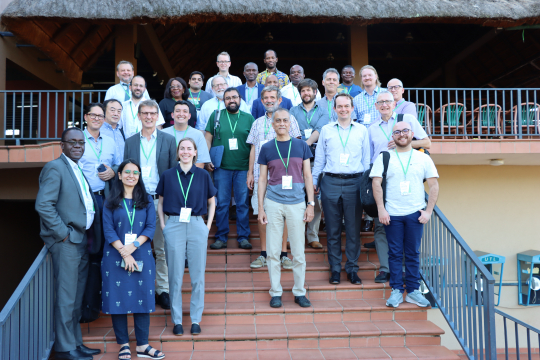Emissions Pricing for Development, EPfD’s open session at the Annual Meeting drew large crowds and extra chairs had to be added to the Majestic Hall. Emissions pricing is not entirely uncontroversial, but its advocates are convinced that it’s the most efficient way to fight climate change. However, there are challenges that need to be addressed.
About 60% of the carbon emissions today and 80% of the anticipated future emissions stem from low- and middle-income countries but there are great differences among these countries, according to Jan Steckel one of the leaders of the collaborative program EPfD.
Global emissions have been rising for decades and there is no plateau in sight. Even if we would reach a plateau, the carbon levels would still continue to increase, so emissions need to be eliminated.
Is emissions pricing the only solution?
“No, there are other ways to stop emissions, but emissions pricing is the cheapest and most efficient way and belongs in any package of policies along with for instance financial support for new technologies,” says E. Somanathan, another of the EPfD leaders.
Risks need to be addressed
Currently, many governments are reacting to the energy crisis, caused by among others the war in Ukraine, by doing the opposite of what EPfD prescribes: They are lowering the taxes for fossil fuels and allowing for less biofuel in diesel and gasoline. There is pressure from the public in many countries to do that.
Also when there is no energy crisis, there is a correlation between countries getting richer and emitting more carbon dioxide, and carbon or energy taxation might in fact be detrimental to development targets. There are in particular three risks that need to be addressed. One is the issue of equity: there is a risk that the poor are more affected than the rich. Another is the health issue, since it may lead to increased use of biomass. And finally, there is the gender issue, if women are diverted from the labor force to collect firewood, it affects them in a negative way.
Powerful enemies
An additional challenge for emissions pricing is that the idea has powerful enemies – autocratic states and the fossil fuel industry. The concept is also opposed by movements such as the Yellow vests, regional governments, and even some scientists.
On the positive side, emissions pricing generates income for the government that can be used to compensate for the disadvantages and foster alternative investments.
Need for more research
“We have a lot of competence within this network on designing emissions pricing policies, on the effects on incomes, on how the effects are distributed among different groups, and how to make policies that are acceptable among the public,” says E. Somanathan.
“But there is also a great need for more research. Policies have to be adjusted to the specific conditions in each country. The research has to be conducted in collaboration with researchers in those countries and it should be them who interact with their policymakers.”
The EPfD collaborative has many new research projects in the pipeline and welcomes more researchers to join them.
“We would like to expand and involve more people,” says E. Somanathan.
Here is more information about EPfD.
By: Petra Hansson

